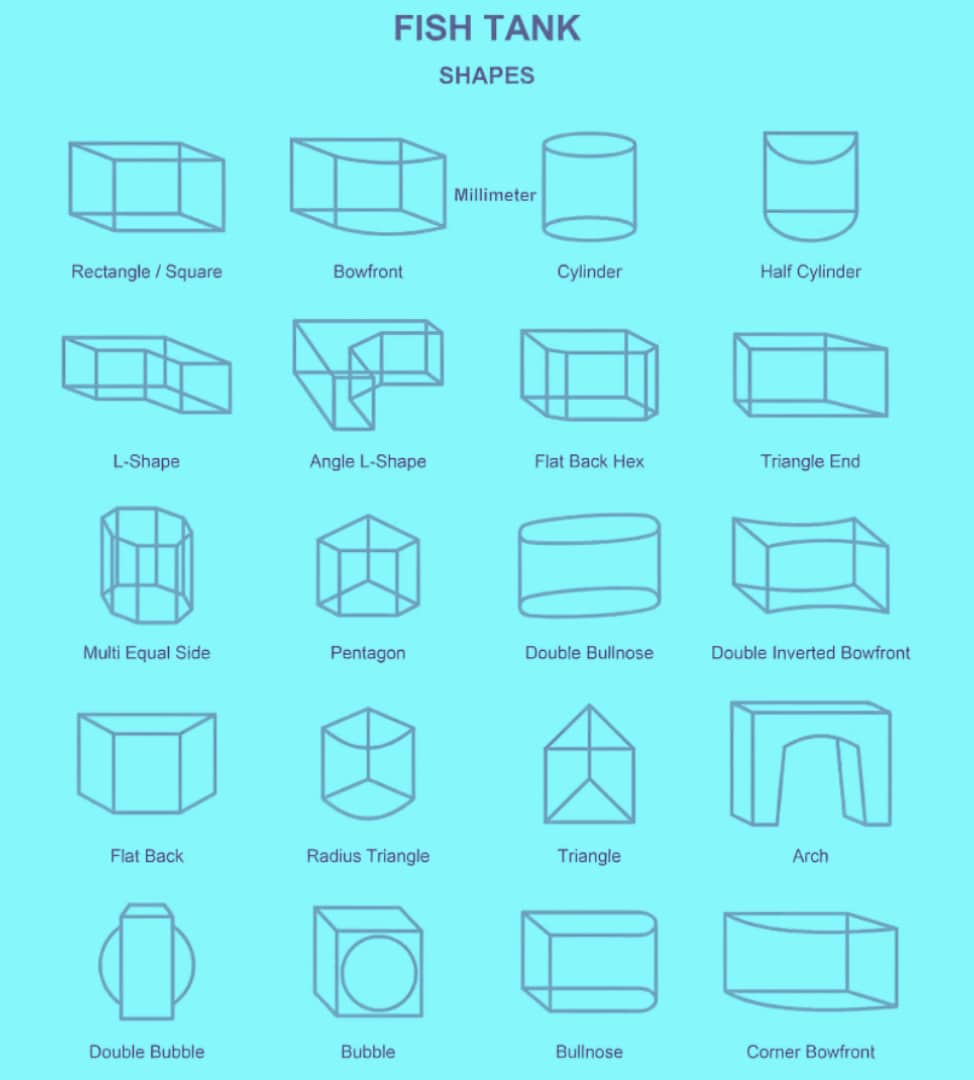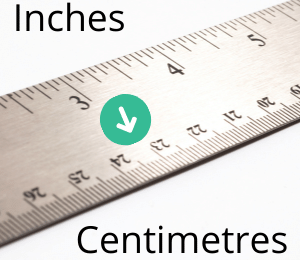Looking to create the perfect aquatic paradise for your fishy friends? Have you ever wondered how the dimensions of your aquarium can impact their well-being? Understanding the size, shape, and weight capacity of your tank is essential for maintaining a healthy environment for your underwater companions.
Each aspect of your aquarium plays a crucial role, but how do you ensure you’re making the right choices? Dive into this guide for insights that will help you navigate the complexities of aquarium dimensions and make informed decisions for the happiness of your aquatic pets.

Key Takeaways
- Consider weight differences: glass vs. acrylic tanks.
- Choose tank size and shape for fish well-being.
- Calculate total weight accurately for stability.
- Ensure proper weight distribution and tank support.
Standard Aquarium Sizes and Weights
When setting up your aquarium, understanding the standard sizes and weights is crucial for creating an optimal aquatic environment. Standard aquarium sizes like 10-gallon, 20-gallon, and 55-gallon tanks are common choices for fish enthusiasts.
A 10-gallon glass aquarium typically weighs around 11 lbs when empty, and with the addition of gravel substrate, the total weight increases to about 21 lbs. Once filled with water, a 10-gallon tank weighs approximately 100 lbs, factoring in the water’s weight at around 8.34 lbs per gallon.
It’s important to remember that decorations and equipment in the tank will add to this weight, so it’s wise to account for their weight as well. While glass aquariums are sturdy and popular, acrylic tanks offer a lighter alternative.
Understanding these weight considerations is essential for ensuring the safe setup and maintenance of your rectangular tank.
Small Aquariums
Small aquariums, often ranging from 2 1/2 to 15 gallons, are exquisite vessels that can bring the beauty of aquatic life into compact spaces. These mini-ecosystems are perfect for showcasing bettas, shrimps, snails, or even a few small schooling fish. While often considered for their aesthetic appeal and fit for limited spaces, small tanks require meticulous care and stable environmental conditions.
| Tank Size | Length x Width x Height | Filled Weight |
|---|---|---|
| 2 1/2 gallon | 12″ x 6″ x 8″ | 27 lbs |
| 5 gallon | 16″ x 8″ x 10″ | 62 lbs |
| 10 gallon | 20″ x 10″ x 12″ | 111 lbs |
| 15 gallon | 24″ x 12″ x 12″ | 170 lbs |
| 15 gallon (Big) | 20″ x 10″ x 18″ | 170 lbs |
Medium Aquariums
Mid-sized aquariums are the perfect middle ground for hobbyists who are looking for a more substantial ecosystem than small tanks can provide but without the space requirements of large aquariums. These tanks are ideal for a variety of freshwater and saltwater fish, offering enough room for more extensive aquascaping and a more diverse community of fish and plants. They also tend to be more forgiving with water parameter fluctuations due to their larger volume.
| Tank Size | Length x Width x Height | Filled Weight |
|---|---|---|
| 20 gallon High | 24″ x 12″ x 16″ | 225 lbs |
| 20 gallon Long | 30″ x 12″ x 12″ | 225 lbs |
| 25 gallon | 24″ x 12″ x 20″ | 282 lbs |
| 29 gallon | 30″ x 12″ x 18″ | 330 lbs |
| 30 gallon Breeder | 36″ x 18″ x 12″ | 348 lbs |
| 40 gallon Breeder | 36″ x 18″ x 16″ | 458 lbs |
| 40 gallon Long | 48″ x 12″ x 16″ | 455 lbs |
Note: “Breeder” tanks are wider than standard tanks, allowing for more surface area at the bottom of the tank, which is beneficial for breeding purposes and provides more ground space for bottom-dwelling species.
Large Aquariums
Large aquariums offer grand displays and the opportunity to create diverse and complex aquatic ecosystems. They are well-suited for experienced aquarists and those looking to keep larger fish species or a more extensive community. The significant water volume of these tanks allows for more stable water conditions, but they also require more robust support structures due to their considerable weight when filled.
| Tank Size | Length x Width x Height | Filled Weight |
|---|---|---|
| 50 gallon | 36″ x 18″ x 19″ | 600 lbs |
| 55 gallon | 48″ x 13″ x 21″ | 625 lbs |
| 65 gallon | 36″ x 18″ x 24″ | 772 lbs |
| 75 gallon | 48″ x 18″ x 21″ | 850 lbs |
| 90 gallon | 48″ x 18″ x 24″ | 1050 lbs |
| 125 gallon | 72″ x 18″ x 21″ | 1400 lbs |
| 150 gallon | 72″ x 18″ x 28″ | 1800 lbs |
| 180 gallon | 72″ x 24″ x 25″ | 2100 lbs |
When setting up a large aquarium, consider not only the space it will occupy but also the weight it will add to your floor. Consulting with a structural engineer can ensure your floor can support the weight of these larger tanks, especially when they are filled with water, substrate, and decorations.
Choosing the Right Aquarium Shape

Understanding the variety of shapes available in acrylic and glass aquariums is crucial when choosing the right aquarium shape for your aquatic environment. Acrylic aquariums offer a wider range of shapes than glass tanks. You’ll find common rectangular tanks with rounded corners in acrylic options, and custom shapes can be crafted for a unique appearance.
Glass tanks, on the other hand, are typically rectangular but also come in hexagons, bow-front rectangles, and cylinders. If you prefer a tall aquarium, acrylic is a good choice due to its strength and lighter weight. Consider the aesthetic appeal, space available, and the specific needs of your aquatic pets when selecting between acrylic and glass tanks and the various shapes they offer.
This decision won’t only impact the visual appeal of your aquarium but also influence the well-being of your aquatic inhabitants.
Calculating Total Aquarium Weight
To calculate the total weight of your aquarium, consider the combined weight of the tank itself, substrate, water, and any decorations or equipment. Glass tanks, being denser, are generally heavier than acrylic tanks.
Estimate substrate weight at around 1 lb per gallon, adding to the overall aquarium weight. Accurately calculate water weight, with freshwater at about 8.34 lbs per gallon and saltwater slightly higher at 8.54 lbs per gallon.
Don’t forget to include the weight of decorations, equipment, and any additional elements in your calculations. Factoring in all these components is crucial to ensure the stability and safety of your aquarium setup.
Setting Up Your Aquarium Properly
Properly setting up your aquarium involves selecting the appropriate tank size and shape to ensure the comfort and well-being of your aquatic inhabitants. When choosing the dimensions, consider the swimming space needed for the fish and the weight of the tank along with decorations. Here are some recommended guidelines to help you set up your aquarium properly:
| Aquarium Sizes | Tank Dimensions |
| 10-gallon | 20″ x 10″ x 12″ |
| 20-gallon | 24″ x 12″ x 16″ |
| 55-gallon | 48″ x 13″ x 21″ |
| Weight Considerations | Swimming Space |
| Ensure the tank stand can support the weight | Provide enough room for fish to swim freely |
| Consider the weight of water, substrate, and decor | Factor in territories and hiding spots for fish |
| Distribute weight evenly to prevent stress on the tank | Allow space for plants or other tank features |
| Regularly check for any signs of stress on the tank | Maintain proper ratios for fish occupancy |
| Avoid placing the tank on uneven surfaces | Follow manufacturer guidelines for tank capacity |
Understanding Aquarium Volume and Weight
Considering the weight distribution and volume capacity of your aquarium is crucial for ensuring the safety and stability of your aquatic environment. Aquarium weight is influenced by various factors, including the material and dimensions of the tank, water weight, and substrate weight.
Water weight is significant, with freshwater at a specific gravity of 1.000 weighing 8.34 lbs per gallon. Acrylic tanks are lighter than glass tanks, impacting the overall weight of the aquarium setup.
When adding substrate, it’s recommended to consider around 1 lb of substrate per gallon of water to account for substrate weight. Proper weight calculations are essential to prevent structural issues and ensure the tank can support its contents without risk of breakage.
How Much Does a Gallon of Water Weigh?
At a temperature of 39.2ºF (4ºC), a gallon of fresh water with a gravity of 1.000 tips the scale at 8.3454 pounds.
When salt is mixed into the water, the weight increases in proportion to the amount of salt added.
For instance, a gallon of water at the specified weight, when combined with a specific gravity of 1.025, will weigh 8.554 pounds (calculated as 8.3454 x 1.025 = 8.554).
Therefore, a gallon of saltwater with a specific gravity of 1.025 will weigh 8.554 pounds.
For details on “how much a gallon of water weighs see our post here“.
Frequently Asked Questions
What Are the Dimensions of a Standard Aquarium?
When setting up a standard aquarium, consider dimensions crucial for fish health. Proper size and shape impact the types and numbers of fish you can comfortably house. Choose wisely for a thriving aquatic environment.
What Are the Dimensions of a 75 Gallon Tank?
When setting up your tank, knowing the dimensions of a 75-gallon aquarium is crucial. It typically measures 48.5 inches in length, 18.375 inches in width, and 21.125 inches in height. Plan your layout wisely for a thriving aquatic environment.
How Big Is a 55-gallon Tank?
A 55-gallon tank typically measures 48.25 inches in length, 12.75 inches in width, and 21 inches in height. When empty, it weighs around 78 lbs for glass tanks. Filled with water, it can weigh approximately 550 lbs.
How Many Gallons Is a 30X12X18 Tank?
A 30x12x18 tank typically holds around 36 gallons. Consider this volume when selecting fish and decor. Ensure your aquatic pets have ample space in this rectangular tank for a balanced and manageable setup.
Conclusion
Now that you have a better understanding of aquarium dimensions, you can confidently create the perfect aquatic paradise for your fishy friends.
By selecting the right size, shape, and weight for your tank, you can ensure a comfortable and thriving environment for your underwater companions.
With proper setup and maintenance, your aquarium will be a beautiful and healthy home for your beloved aquatic creatures.
Dive in and enjoy the wonders of the underwater world!





